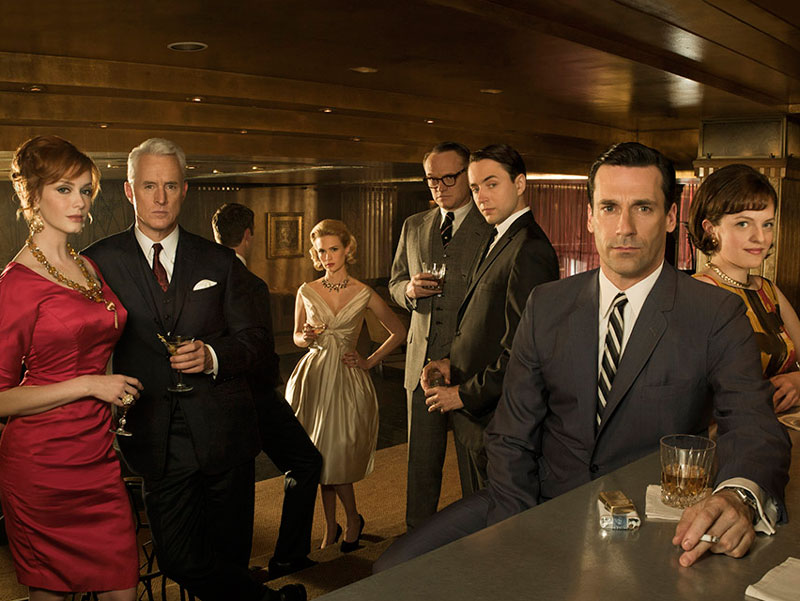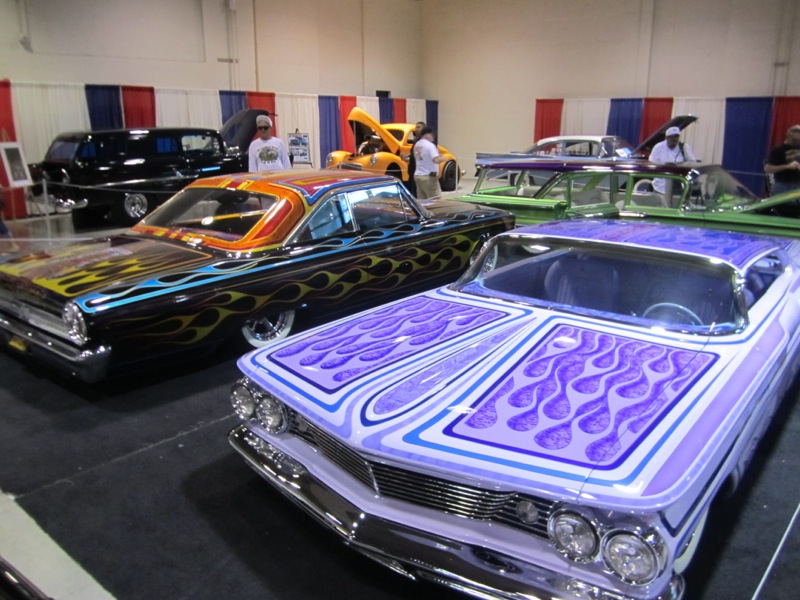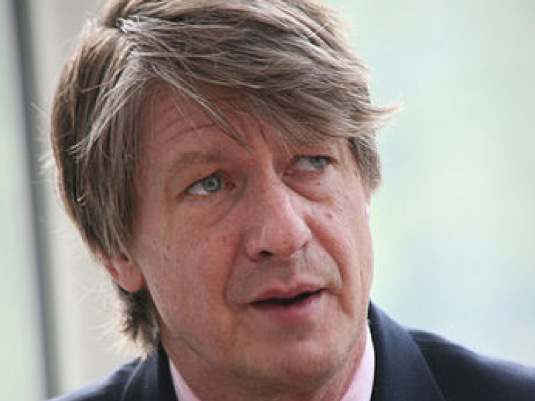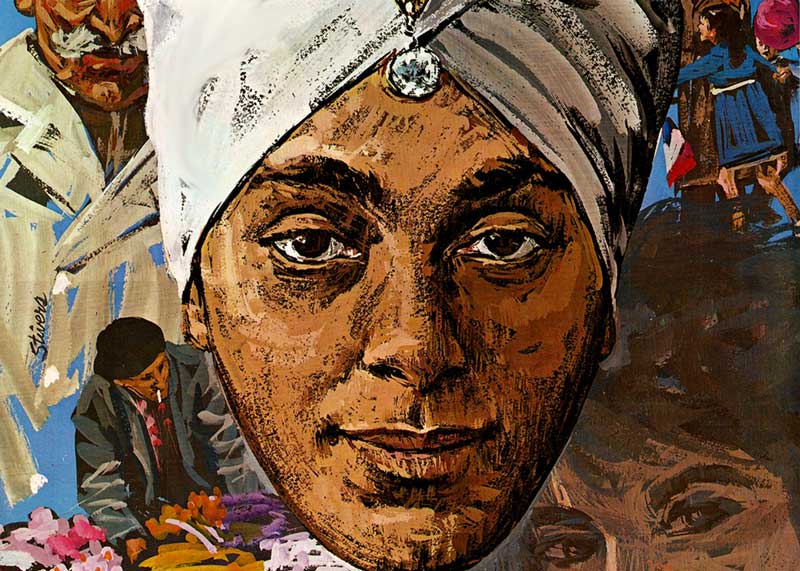
Korla Pandit Documentary
Podcast: Play in new window | Download
It’s hard to imagine a world without televisions. Today, TVs are not just ubiquitous, they’re everywhere. But in the 1940s, television was an expensive, new gadget that very few households owned. When the World Series was televised for the first time in 1947, only 44,000 TV sets were in use in the entire U.S. In 1948, only ten percent of Americans had ever even seen a television program.The only thing more scarce than TV sets was TV programming.
Radio had been widely adopted for decades, with over 40 million sets in use in the late 1940s. So, the majority of talent and advertising money was still going into radio. In addition, television was so new that no one had really figured out what to do on TV yet. In just a few years, skyrocketing viewership would cause radio hits like Dragnet and Jack Benny to move to television. But in its infancy, many early TV shows weren’t much more than radio with a picture.
The traditional radio music program was adapted to TV by simply showing the musicians playing their instruments. That was a TV show. And, it was pretty amazing stuff by 1940s standards.
A music show that premiered during those pioneering days of television was Korla Pandit’s Adventures In Music. It was broadcast out of KTLA in Los Angeles beginning in February 1949 and had more of a hook than your average music program.
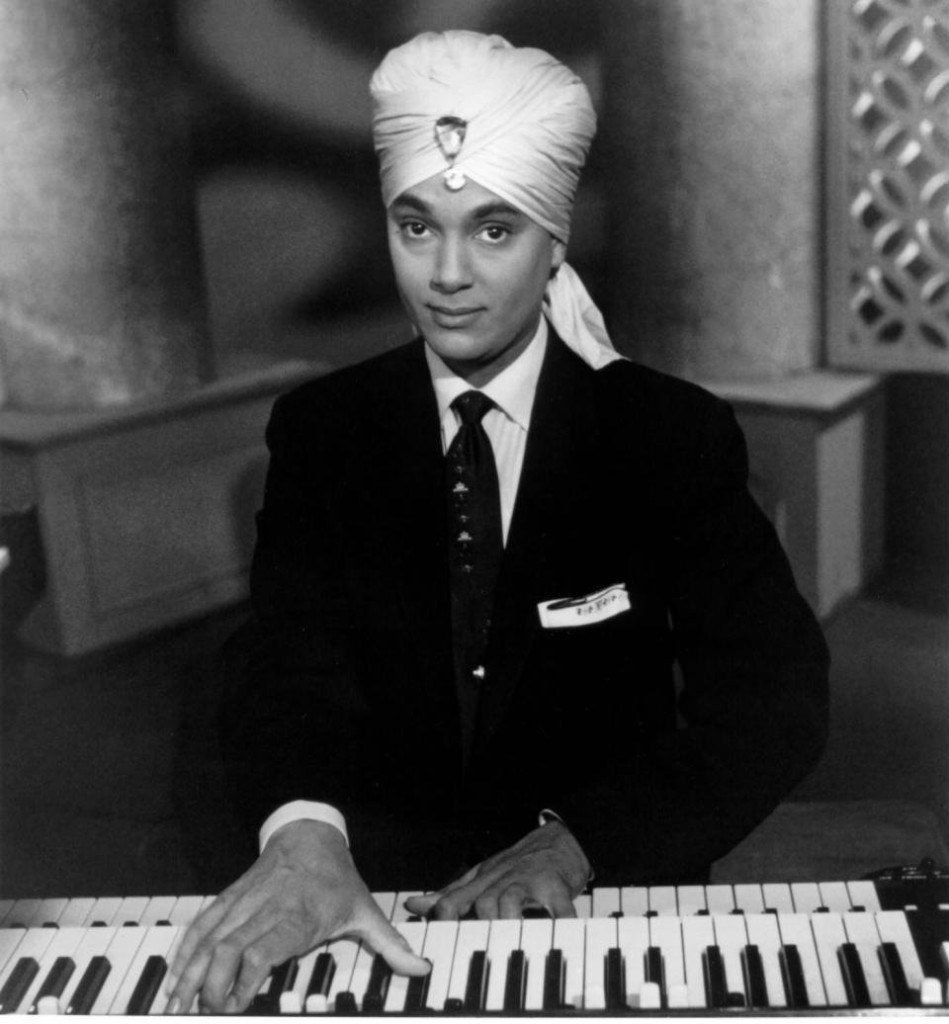 Pandit was Indian musical prodigy born in New Delhi. He played exotic themes on a Hammond organ or a piano (sometimes playing both instruments at once). As he played, the turban-clad musician gazed wistfully, directly into the camera. His only communication with the viewer was through his transe-like stare and what he called “the universal language of music.” He never spoke on the show.
Pandit was Indian musical prodigy born in New Delhi. He played exotic themes on a Hammond organ or a piano (sometimes playing both instruments at once). As he played, the turban-clad musician gazed wistfully, directly into the camera. His only communication with the viewer was through his transe-like stare and what he called “the universal language of music.” He never spoke on the show.
What at first glance seems like a simple music program became something wildly exotic and otherworldly. Pandit’s organ arrangements were accompanied by dark lighting, slow camera moves and close-ups of his eyes. The resulting show was all at once hypnotic, noir, exotic and surreal. He performed Adventures In Music live on the air, five days a week. Over 900 episodes were aired, but only a few survive to this day.
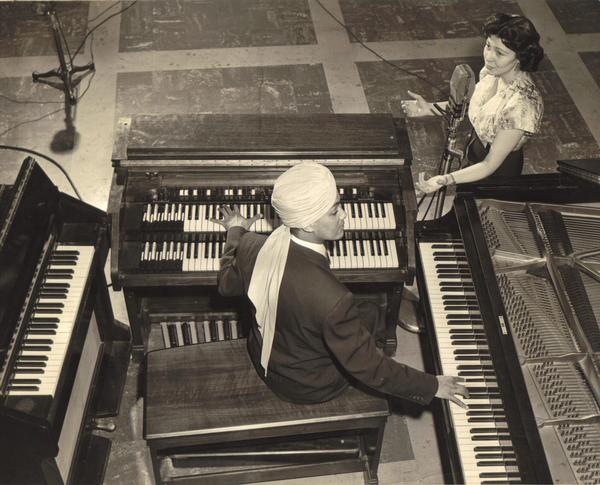 Pandit’s show aired during TV’s boom years and he became wildly popular. In 1951, he played a two-hour concert at the Pasadena Civic Auditorium and was called back for three encores.
Pandit’s show aired during TV’s boom years and he became wildly popular. In 1951, he played a two-hour concert at the Pasadena Civic Auditorium and was called back for three encores.
A version of the show was syndicated to independent TV stations nationwide and he became a huge hit. He became friends with eastern religious figures and released dozens of albums. His music laid a foundation the exotica genre, made famous in the 1950s by musicians like Les Baxter, Martin Denny and Yma Sumac.
But what seemed wild in the uptight days of 1948 was considered laughably tame by the freaky-deaky standards of 1968. Pandit and other exotica musicians fell out of favor. Korla Pandit’s celebrity faded, but he worked as a musician and a music teacher, and continued releasing albums through 1971.
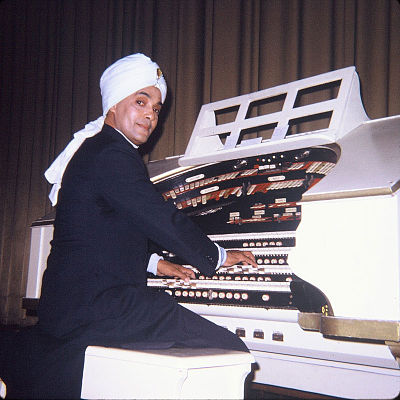 He reclaimed some of his fame during the exotica / lounge revival of the 1990s, but passed away shortly after.
He reclaimed some of his fame during the exotica / lounge revival of the 1990s, but passed away shortly after.
Director John Turner has just finished a feature documentary about Pandit’s life called Korla.
The documentary doesn’t just tell the lost story of a TV pioneer or an Indian musician. It also tells a story that turns out to be uniquely American. And it’s based on a secret that Pandit kept hidden even from his own family. It’s a secret that wasn’t discovered until years after his death.
Korla – Trailer from Appleberry Pictures on Vimeo.

